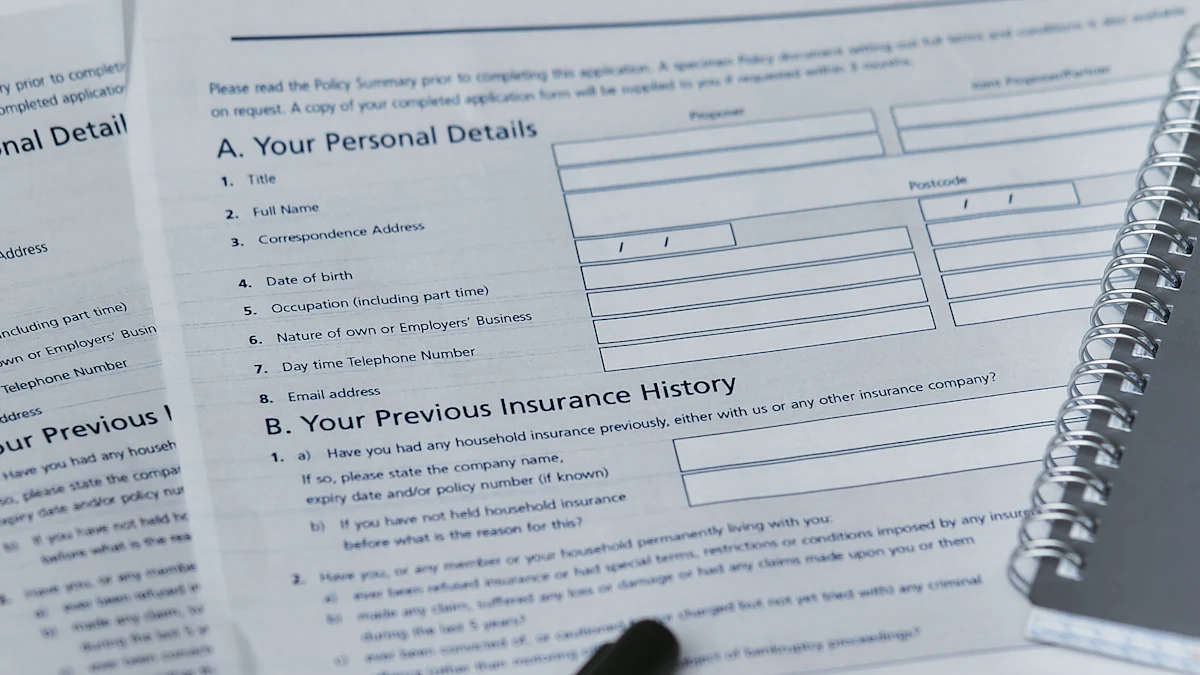Facing an insurance drop can feel overwhelming, but understanding the reasons behind it helps you take control. Common causes include non-payment, policy dissatisfaction, or regulatory changes. Start by identifying the issue and addressing it quickly. This proactive approach ensures you can explore new options and secure the coverage you need without delay.
Key Takeaways
- Identify the reason for your insurance drop by contacting your insurer; understanding the cause is crucial for addressing the issue and preventing future cancellations.
- Explore reinstatement options or grace periods with your insurer to avoid lapses in coverage; acting quickly can help you maintain continuous protection.
- Improve your insurability by maintaining timely premium payments and reducing risk factors; demonstrating responsibility makes you a more attractive policyholder.
Common Reasons for an Insurance Drop
Non-payment of premiums
Failing to pay your premiums on time is one of the most common reasons for an insurance drop. Insurance companies rely on regular payments to provide coverage. Missing payments signals financial instability, which makes you a higher risk for insurers. If you miss multiple payments, your insurer may cancel your policy entirely. To avoid this, set up automatic payments or reminders to ensure you never miss a due date.
High-risk behavior or claims history
Your behavior and claims history play a significant role in how insurers view you. Filing multiple claims within a short period can make you appear high-risk. For example, frequent car accidents or property damage claims may lead your insurer to believe you are more likely to cost them money. Similarly, engaging in risky activities, such as reckless driving or failing to maintain your property, can result in cancellation. To improve your standing, focus on reducing risks and maintaining a clean claims record.
Policy or company changes
Sometimes, an insurance drop happens due to factors beyond your control. Changes in company policies, mergers, or acquisitions can affect your coverage. For instance:
- Mergers may trigger “change in control” provisions, altering your policy terms.
- Companies might switch to “run-off” coverage after a merger, leaving gaps in your protection.
- Reviewing your policy during these transitions helps you identify potential liabilities and adjust accordingly.
Understanding these reasons allows you to take proactive steps to secure new coverage and avoid future cancellations.
Steps to Take After Being Dropped

Confirm the reason for cancellation with your insurer
Start by contacting your insurance company to understand why your policy was canceled. Ask for specific details about the cancellation. For example, if the issue was non-payment, confirm the missed payments and the timeline. If the cancellation was due to claims history or risk factors, request a detailed explanation. Knowing the exact reason helps you address the problem and avoid similar issues in the future. Keep a record of this conversation for reference.
Review your policy and gather necessary documents
Take time to review your old policy. Look for any clauses or terms that might explain the cancellation. This step ensures you fully understand your previous coverage and any gaps that may have existed. Gather all relevant documents, including your cancellation notice, payment records, and claims history. These documents will be essential when applying for new coverage or negotiating reinstatement with your current insurer.
Explore reinstatement options or grace periods
Many insurers offer reinstatement options or grace periods after an insurance drop. Contact your insurer to see if you qualify for reinstatement. Some companies allow you to reinstate your policy by paying overdue premiums or addressing specific issues. If reinstatement isn’t possible, ask about grace periods that might give you extra time to find new coverage. Acting quickly during this period can help you avoid lapses in protection.
Tip: Always act promptly after a cancellation to minimize the risk of being uninsured.
Securing New Insurance Coverage

Compare policies from multiple providers
When searching for new coverage, comparing policies from different providers is essential. Each policy offers unique features that can impact your decision. Focus on key factors to find the best fit:
- Waiting periods: Check how long you must wait before certain benefits, like coverage for pre-existing conditions, become active.
- Restoration benefit: Look for policies that restore your coverage amount after a claim. This ensures you remain protected throughout the year.
- Room rent limits: Understand the restrictions on room rent. These limits can affect your choice of hospital and out-of-pocket expenses.
- Annual health check-up: Some plans include free annual check-ups, which help with preventive care.
- Co-payment clause: Review whether the policy requires you to pay a portion of the bill. This can significantly impact your overall costs.
Evaluating these factors helps you make an informed decision and avoid surprises later.
Work with an insurance broker
An insurance broker can simplify the process of finding new coverage. Brokers provide personalized solutions by analyzing your financial situation and coverage needs. They give you access to a wide range of policies, allowing you to compare options easily. Brokers also assist with the application process by helping you gather documents and communicating with insurers on your behalf. If you face challenges during a claim, brokers act as advocates. They guide you through the process, prepare necessary documents, and negotiate with insurers to ensure fair payouts. Working with a broker saves time and reduces stress.
Improve your insurability
Improving your insurability increases your chances of securing better coverage. Start by addressing the reasons behind your insurance drop. For example, if non-payment caused the cancellation, demonstrate financial stability by maintaining a consistent payment history. Reduce risk factors by avoiding high-risk activities or improving safety measures, such as installing security systems in your home. A clean claims history also makes you more attractive to insurers. Taking these steps shows providers that you are a responsible policyholder.
Tip: Keep your records organized and up-to-date. This makes the application process smoother and helps insurers assess your risk accurately.
Preventing Future Insurance Drops
Maintain timely premium payments
Paying your premiums on time is the simplest way to avoid another insurance drop. Late or missed payments signal financial instability, which insurers view as a risk. Set up automatic payments through your bank or insurer to ensure you never miss a due date. If automatic payments are not an option, create reminders on your phone or calendar. Keeping a consistent payment history shows insurers that you are reliable and responsible.
Reduce risk factors
Reducing risk factors makes you a more attractive policyholder. Insurers assess risks based on your lifestyle, property, and location. Common risk factors include:
- Poor credit, which suggests financial instability.
- Living in high-risk zones prone to natural disasters.
- Owning certain pets or breeds that increase liability concerns.
- Older homes that may not meet safety standards.
Address these risks by improving your credit score, upgrading your property, or installing safety features like smoke detectors. If you live in a high-risk area, consider additional coverage to mitigate potential losses. These steps demonstrate your commitment to minimizing risks.
Communicate proactively with your insurer
Proactive communication builds trust with your insurer and helps prevent misunderstandings. For example:
| Evidence | Explanation |
|---|---|
| Building relationships leads to trust | Trust encourages you to ask questions and resolve issues before they escalate. |
| Clear communication from the beginning | Understanding your policy reduces confusion and dissatisfaction. |
| Proactive customer service | Prompt responses to concerns prevent frustration and cancellations. |
Reach out to your insurer with questions or updates about your situation. Inform them of changes, such as home renovations or lifestyle adjustments, that could affect your policy. Open communication ensures your coverage remains aligned with your needs.
Tip: Regularly review your policy with your insurer to stay informed about any changes or updates.
Experiencing an insurance drop can feel overwhelming, but taking immediate action helps you regain control. Understanding the reasons behind the cancellation allows you to address issues effectively. Staying proactive offers long-term benefits, such as ensuring your policies meet your changing needs, avoiding coverage gaps, and identifying better opportunities. These steps help you secure reliable coverage and prevent future cancellations.
FAQ
What should you do if no insurer approves your application?
Focus on improving your insurability. Address issues like credit score, claims history, or risk factors. Consider state-sponsored insurance programs or high-risk pools as temporary solutions.
How long does a lapse in coverage affect your record?
A lapse can impact your record for several years. Insurers may view you as high-risk. Securing new coverage quickly minimizes long-term consequences.
Can you negotiate with your previous insurer to reinstate your policy?
Yes, many insurers allow reinstatement. Contact them immediately, resolve outstanding issues, and provide proof of improved circumstances to increase your chances of approval.

